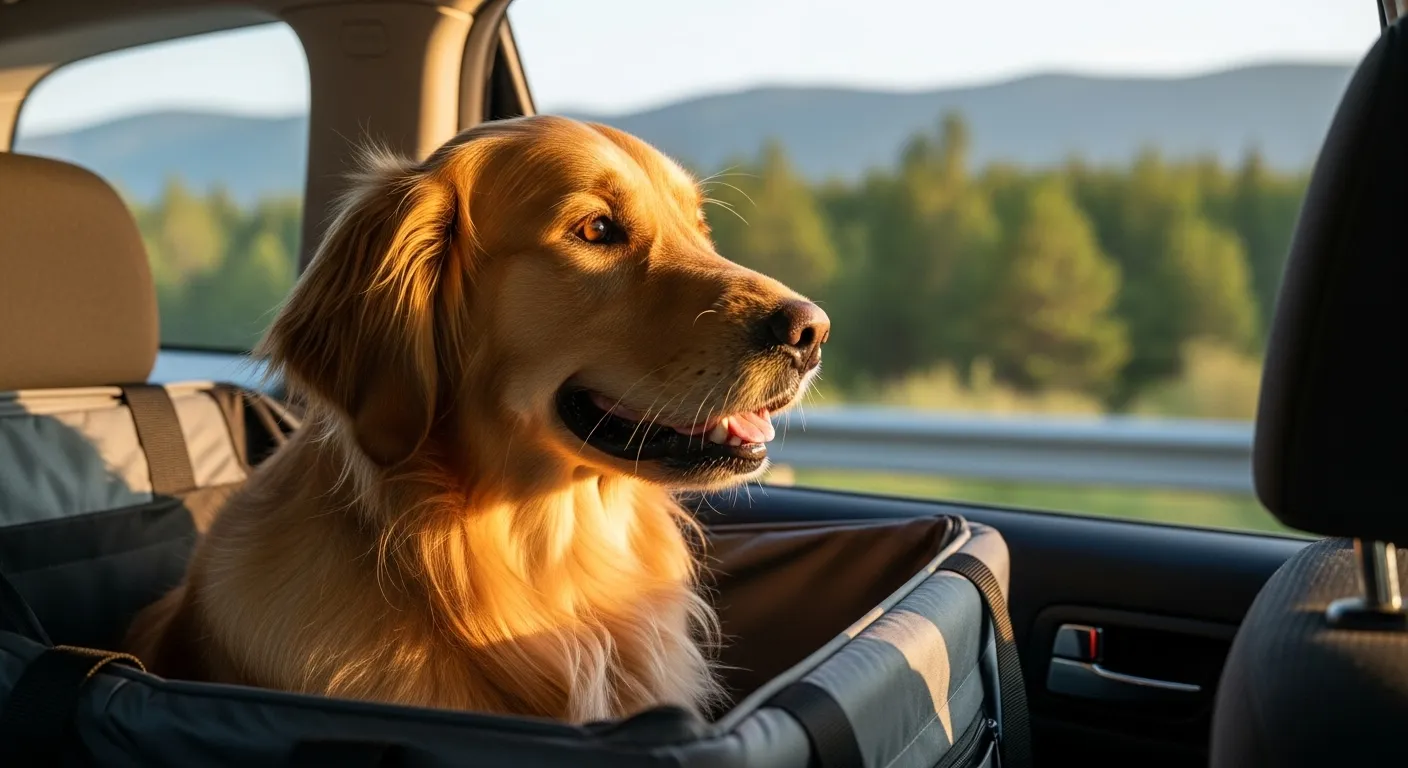
Safety First: Securing Your Pet in a Moving Vehicle
An unrestrained pet in a moving car is a significant safety hazard. In a sudden stop or accident, they can become a projectile, causing serious injury to themselves and human passengers. They can also be a dangerous distraction, climbing into the driver’s lap, blocking the rearview mirror, or interfering with the pedals. Ensuring your pet is properly secured is an act of love and responsible ownership. There are several excellent options for pet travel safety, and the best one depends on your pet’s size, temperament, and your vehicle type.
Choosing the Right Restraint
The most important factor is choosing a restraint that is the correct size for your pet and allows them to sit, stand, and lie down comfortably, but not roam freely around the vehicle. No matter which you choose, get your pet used to it at home before your trip.
Crates and Carriers: For many pets, especially smaller dogs and cats, a well-ventilated crate is the safest way to travel. It contains them completely, preventing distraction, and offers a layer of protection in a collision. The crate should be large enough for them to stand up and turn around in but not so large that they will be tossed around inside during a sudden stop. Ensure the crate is secured in your vehicle, either with seatbelts or placed in the cargo area and braced against other luggage so it cannot slide or tip over.
Seat Belt Harnesses: A travel harness is a great option for dogs who need to be in the main cabin of the car. It is different from a regular walking harness. A proper car harness is specifically designed to attach to the car’s seatbelt system and has been crash-tested for safety. It keeps your dog in their seat, preventing them from being thrown forward in a crash or distracting the driver. Look for harnesses that have passed independent safety tests and follow the manufacturer’s instructions for a secure fit.
Vehicle Barriers: For larger dogs who ride in the cargo area of an SUV or wagon, a sturdy metal barrier can be installed between the cargo space and the passenger seats. This prevents them from jumping into the main cabin and distracting the driver. While effective for preventing distraction, these should be used in conjunction with a crate or harness for maximum safety in the event of an accident.
Common Safety Pitfalls to Avoid
Even with the best intentions, some common practices are incredibly dangerous for pets. It’s crucial to be aware of these risks.
First, never allow a pet to ride in your lap or in the front passenger seat. An airbag deployment can be fatal to a pet, even in a minor fender bender.
Second, resist the urge to let your dog hang their head out of the moving car’s window. While it looks joyful, it exposes them to serious risks. Debris from the road can cause severe eye injuries or lodge in their nasal passages. They are also at risk of falling or jumping from the vehicle.
Finally, and most importantly, never, ever leave your pet unattended in a vehicle. On an 85-degree day, the temperature inside a car with the windows slightly open can reach 102 degrees in just 10 minutes. In 30 minutes, it can soar to 120 degrees. This can cause heatstroke, brain damage, and death. It is not worth the risk, even for a quick errand.














